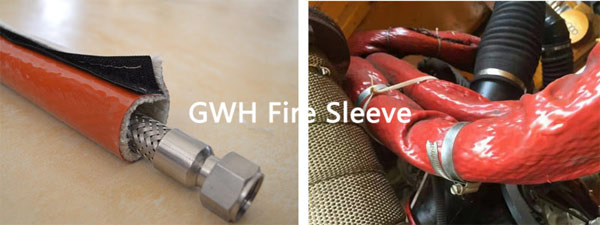- Equipment: Using fiberglass and silicone together protects hydraulic hoses, lines, cables and wiring, and other critical components from the hazards of intense heat, sparks, and direct flame. Molten metal splashes are deflected at 2200°F (1200°C) while providing constant heat protection up to 500°F (260°C). The materials are resistant to hydraulic fluids, fuels, lubricating oil, and water. A braided fire sleeve provides a high level of protection in critical areas potentially exposed to intense fire conditions (ex. an oil line inside of an engine compartment). A knitted fire sleeve is commonly used in industrial applications for hose and cable protection. A fire blanket also shields cables, hoses and equipment from splashes of molten metal and heavy sparks.
- Durability: Fiberglass and silicone produce a lightweight and highly flexible product. The materials will not melt, burn, or combust. An added benefit is the absence of toxic smoke emissions. Using fire sleeves with a hook and loop closure feature allows installation in-situ. This heavy-duty industrial sleeving can be easily retrofitted into existing systems and in tight spaces. Fire blankets are resistant to ozone, abrasions, oxygen, light, and weather aging.
- Safety: The combination of fiberglass and silicone in fire sleeves and fire blankets protects individuals against burns. Because of their enhanced heat and flame protection, fireblankets are used to provide shielding for worker life safety, especially in welding or fabrication.

